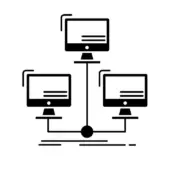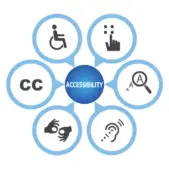Customers today have high expectations. They want more than just a quality product or service—they expect a seamless experience that meets their needs. In fact, 73% of consumers say customer experience is a key factor in purchasing decisions. To deliver this experience level, businesses must deeply understand their customers’ perspectives and pain points. Creating a customer journey map is one of the most effective ways to do this.
By mapping out the steps a customer takes when engaging with a brand, you can identify opportunities to enhance their experience, letting them feel valued and supported at every touchpoint. In this article, we explore the essential elements of an effective customer journey map and discuss how you can leverage this powerful tool to improve customer satisfaction and drive business growth.

What Is Customer Journey Mapping?
Today’s customers come into contact with businesses through a variety of touchpoints. A customer journey map is a visual representation of every interaction, from the very first engagement to purchase and post-purchase encounters. It illustrates how prospects experience your brand, allowing you to account for every interaction in your UX design to deliver the best experience.
Why Is Customer Journey Mapping Important to Your Business?
Customer journey mapping allows you to see your brand from the customers’ perspective, allowing you to design a UX that builds trust and increases conversion. It also helps you understand the needs of each audience segment at different stages of the customer lifecycle. Thus, you can fine-tune your marketing message and sales process to deliver the desired brand experience.
The insights gained from journey mapping can help increase customer satisfaction, reduce churn, improve the sales process, and cultivate customer loyalty. It also informs development priorities and helps focus your marketing budget on touchpoints that can optimize user results and increase revenue.
UpTop Perspective
Customer journey maps are most effective when created collaboratively across teams. To stay accurate and relevant, they should be reviewed and updated every 3–6 months.
How to Create an Effective Customer Journey Map
Effective mapping requires gathering and analyzing customer data to understand how users interact with your brand. Here are the key steps to creating a practical customer journey map:
1. Define Your Goals and Objectives
Start by identifying the purpose of your customer journey map. Are you looking to understand your current customer experience, envision a future state, or map a specific customer’s day-to-day interactions? Defining your goals will help ensure the map is tailored to your needs.
2. Develop Buyer Personas
Create detailed profiles of your target customers based on research and feedback from your team and actual customers. Understanding your buyer personas, their pain points, motivations, and behaviors, is crucial for mapping their journey accurately.
3. Identify All Customer Touchpoints
Make a comprehensive list of every channel and interaction where your customers engage with your brand, from your website and social media to in-person sales and support. Documenting these touchpoints will reveal opportunities to optimize the experience.
4. Map Customer Actions
For each touchpoint, outline the specific actions you want customers to take and any obstacles or friction points preventing them from converting. This will help pinpoint areas for improvement.
5. Prioritize Critical Elements
Based on your business goals, decide which aspects of the customer journey are most important to focus on in your map. This could include high-impact touchpoints, pain points, or moments crucial for driving conversions or loyalty.
6. Walk the Journey
Put yourself in your customers’ shoes and experience the full journey yourself. This will give you firsthand insight into what’s working well and where the experience falls short to make informed adjustments.

Customer Journey Mapping Improves Design Thinking
By understanding the starting points and the desired endpoint of the customer relationship, you can design a marketing strategy to cost-effectively progress prospects down the sales funnel. A customer journey map helps you gain important insights to inform the design thinking process in the following ways.
- It allows you to see the brand experience from the customers’ perspective and develop empathy for your audience. By understanding their emotions and motivations, you can structure touchpoints and create messages that appeal to your ideal customers.
- The customer journey map helps you define the problems your ideal customers face. This enables you to position your products’ features in a way that’s most relevant to them.
- Customer journey mapping helps inform the ideation process for product development and marketing content. It enables your team to develop human-centered problem statements and innovative, customer-centric ideas.
- The process also accounts for prototyping, testing, and post-sale customer interactions to ensure product improvements based on market demand while cultivating customer loyalty to increase retention and customer lifetime value.
Customer journey mapping is an essential tool for today’s businesses. It can help you develop a product relevant to your market and inform the design of marketing strategies that will appeal to your ideal customers.
UpTop’s experts can guide you through the journey mapping process. Our mapping workshops will help you identify internal and external friction points and serve as the foundation for user research during design sprints. Journey mapping is a key starting point for identifying innovation opportunities as part of a broader design approach to larger initiatives. Contact us today to get started.


